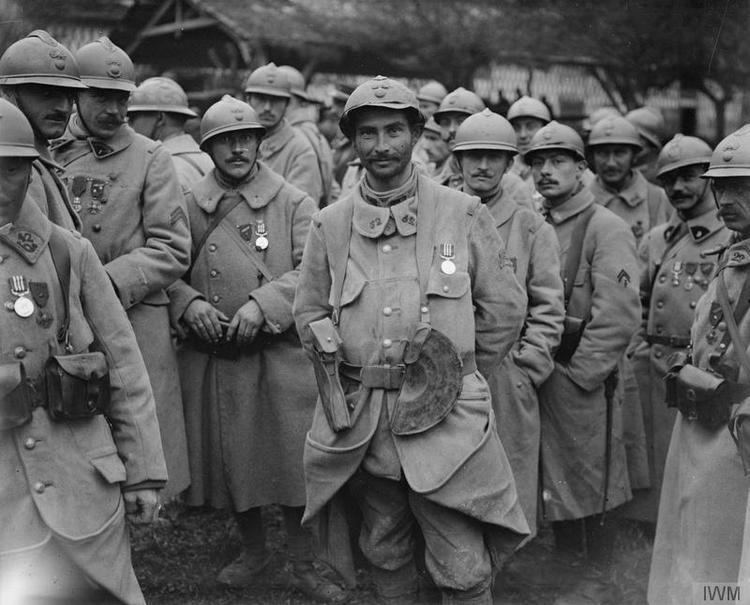Type Military decoration | Status Discontinued in 1993 | |
 | ||
Awarded for acts of gallantry and devotion to duty under fire Established 25 March 1916(back dated to 1914) Next (higher) | ||
Until 1993, the Military Medal (MM) was a military decoration awarded to personnel of the British Army and other services, and formerly also to personnel of other Commonwealth countries, below commissioned rank, for bravery in battle on land.
Contents
The medal was established on 25 March 1916. It was the other ranks' equivalent to the Military Cross (MC), which was awarded to commissioned officers and, rarely, to warrant officers, although WOs could also be awarded the MM. The MM ranked below the Distinguished Conduct Medal (DCM), which was also awarded to non-commissioned members of the Army.
According to Frank Richards when the medal was first introduced, it was unpopular among regular soldiers. Richards writes: "There were no grants or allowances with the Military Medal, which without a shadow of a doubt had been introduced to save awarding too many DCMs. With the DCM went a money-grant of twenty pounds, and a man in receipt of a life pension who had won the DCM was entitled to an extra sixpence a day on to his pension. After the new decoration was introduced, for every DCM awarded there were fifty Military Medals. The old regular soldiers thought very little of the new decoration".
Recipients of the Military Medal are entitled to use the post-nominal letters "MM". Over 115,000 awards were made for actions during the First World War. Additionally, over 5,700 bars were awarded, as well as 180 second bars. There was one instance of a third bar being awarded; this was made to Private Ernest Albert Corey, who served as a stretcher bearer in the Australian 55th Infantry Battalion, which served on the Western Front.
During the Second World War, over 15,000 awards of the MM were made. The decoration has occasionally been bestowed upon non-British or Commonwealth subjects, and has also been awarded to some civilians, with the first such awards being made to two female civilians for actions during the Easter Rising in 1916.
In 1993, the Military Medal was discontinued. Since then, the Military Cross has been awarded to personnel of all ranks within the British honours system. Several Commonwealth nations, such as Australia, New Zealand and Canada, have established their own honours systems in the post Second World War era and now award their own gallantry decorations.
Description
The medal and ribbon had the following features:
Over 135,000 people have been awarded the Military Medal. Among the more notable recipients are:
Popular culture
In the BBC series, Peaky Blinders, the principal protagonist/ anti- hero Thomas Michael Shelby is a recipient of the Military Medal.
In Soldier Soldier, broadcast on ITV, at the 50th D Day Anniversary, Robson Green's character, Fusilier Dave Tucker, gets a veteran called Jack Knight talking, who subsequently turns out to be a recipient of the Military Medal.
In the Dad's Army episode Branded, the platoon discover that the character Private Godfrey was a Conscientious Objector. He is then ostracized by the platoon, until they find that he won the Military Medal in the First World War whilst serving in the Royal Army Medical Corps. The medal itself is central to the storyline in that it is higher than all the medals held by the rest of the platoon and is seen as a mark of true heroism which earns him great respect from them all.
In ANZAC Girls episode 6, "Courage", Sister Ross-King and three other nurses are awarded the Military Medal for bravery under fire.
In the video game Tom Clancy's Rainbow Six: Siege , the SAS character named Thatcher is seen wearing the Military Medal. The reason why it has been awarded to him is not mentioned
